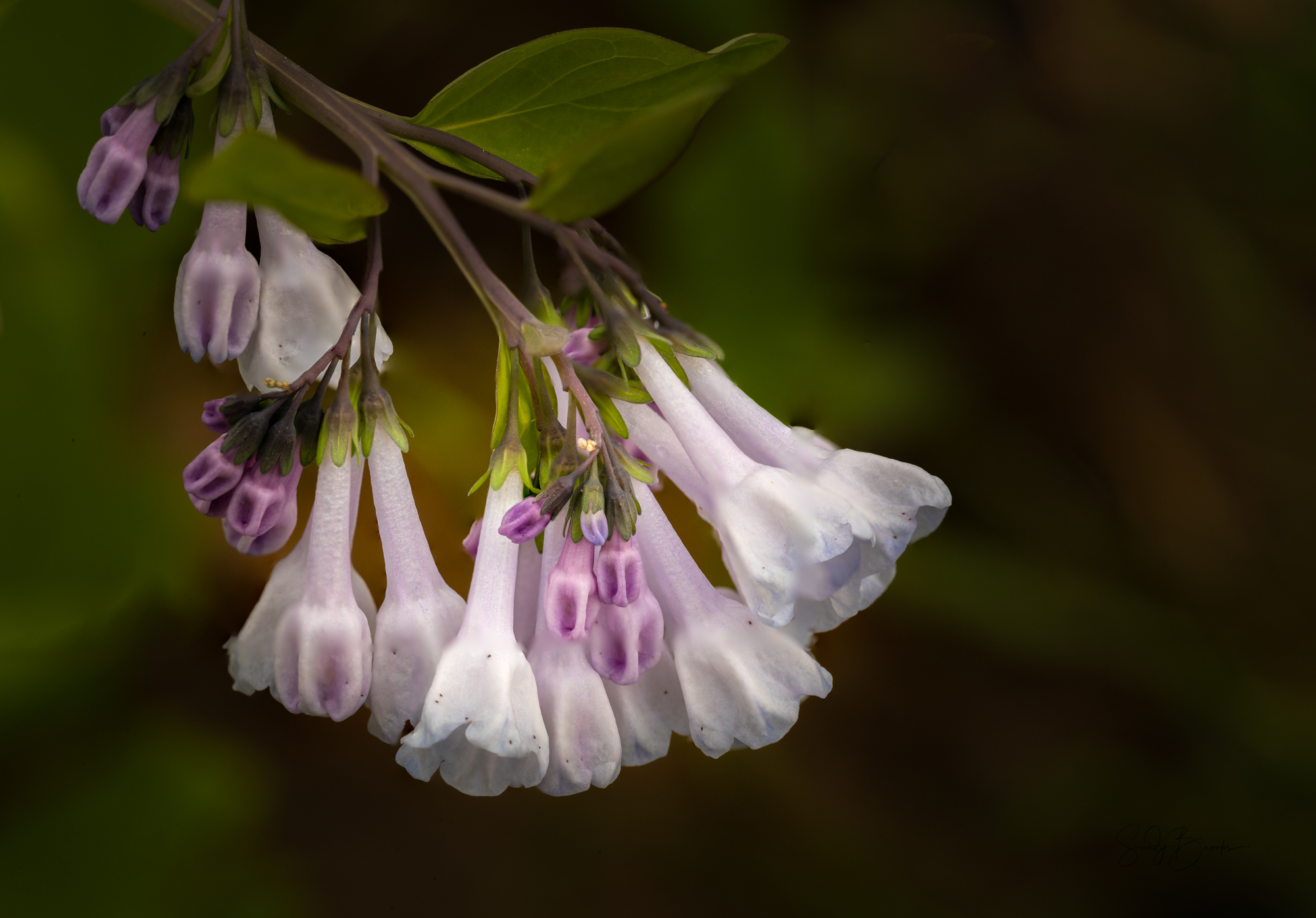Bulbs
Spring bulbs bloom from late winter to mid May providing color as well as pollen for bees when little else is in bloom. Summer bulbs create color in late spring and early summer gardens before many natives are in bloom. Bulbs are storage units for plants to survive dormant periods. There are four types of these underground storage units:

- True bulbs: (daffodils, tulips, hyacinths, etc.) are complete plants within a tiny package. They produce stems from the base of the bulb and survive from year to year. As the plant grows, bulblets form at the base of the mother plant.
- Corms (crocus, freesia, and gladiolus) are usually short squat stems filled with food storage tissue. Some corms produce cormels which, like bulblets, are baby plants and can be separated from the parent to grow new plants.
- Tubers (potatoes, dahlias and some begonias) are underground roots with fleshy, food-storing parts that resemble tubers.
- Rhizomes (irises) are bulb-like power packs that grow along the soil surface. Growth buds form on a rhizome for next year’s leaves and flowers. The original rhizome will not reflower and in time will need to be dug out.
Planting Guidelines
All bulbs like sun. However, since many spring bulbs grow and flower before trees leaf out, many bulbs can be planted under trees. Spring bulbs can be planted in late fall, up until the ground is frozen, but not more than six weeks before the first frost.
Prepare the soil. Check for pH (most bulbs prefer pH6-7) Loosen the soil and add compost if needed in the top 18 inches as good drainage is essential for bulbs. For a good start, mix bone meal in the bottom of the hole but do not let the bulb touch the bone meal. The general rule of thumb for planting spring bulbs is to plant two to three times as deep as the bulbs is tall, measuring from the bottom of the bulb. Water the bulbs after planting. This helps settle the soil and provides moisture for the bulbs to start rooting. Fall-planted bulbs must root before cold weather.
Fertilize monthly from shoot emergence until the plants reach full flower.
After blooming, allow the leaves of the plant to wither and turn brown; do not cut or mow them. The plant needs the leaves to manufacture food (through photosynthesis) to be stored in the bulb for next year’s growth.
After the foliage is completely shriveled, spring bulbs can be left in place or dug up and replanted in the fall. For the parks and Mural Wall, they will be left in place. Some bulbs will multiply and come back uear over year such as daffodils. Othe bulbs, such as tulips will use up their energy within a year or two and need to be replaced.
After about three years, spring bulbs should be “lifted” and divided. Signs that bulbs need to be lifted are overcrowding, multiple stems, and declining flowers.
The best time to divide and replant is after the foliage has yellowed. It is easier to locate bulbs when you can still see the leaves. Lift the bulb by placing a trowel beneath the plant and lifting. Cut off most of the brown foliage, but leave a couple of inches on the bulb.
When the plant has been lifted, remove the bulblets from the mother plant, then replant them separately, or at the same time you replant the mother plant, with the tips facing up. The bulblets will not bear flowers for about two years.
Spring Bulbs VS Summer Bulbs
Spring-blooming bulbs are winter hardy. They are planted in the fall, grow and bloom in spring, then lie dormant for a year. Spring bulbs do not have to be dug up unless they need division. Most will continue to grow and bloom each spring, some for many years, some for only a year or two.
Some examples of spring bulbs are hyacinth, tulip and daffodil.
Summer-blooming bulbs are not winter hardy. They are planted in spring and they grow and bloom in summer. They can either be treated like annuals (enjoyed for a single season) or you can dig them up and store them in a frost-free area over the winter until they can be replanted the following spring. Some examples of summer bulbs are dahlias, cannas, gladiolas, and tuberous begonias.
Right Plant Right Place: Some Bulbs Prefer Sun and Some Prefer Shade
Bulbs for Shade

Allium triquetrum

Chionodoxa gigantea

Fritillaria

Galanthus (Snowdrops)

Leucojum aestivum (Not Convalleria (Lilly of the Valley)
Bulbs for Sun

Tulips
Come in many colors but usually need to be replaced every year or two.

Daffodils and Jonquils
Jonquils are a type of daffodil (genus Narcissus).
- Daffodil flowers are typically lightly scented while jonquils are highly perfumed.
- Jonquils are predominant and hardier in warmer southern regions, USDA Zones 8 and higher.
- Daffodils prefer the colder winter temperatures in Zones 3-8 before blooming in spring.
- A jonquil will feature 1-5 golden yellow, fragrant flowers per stem. Each flower’s petals are spread around a small center cup.
- Daffodils have distinct trumpets surrounded by six petals with slim-tipped, sword-like foliage. Colors range from bicolored to white, pink, yellow, and orange.
- Golden yellow jonquils display slender leaves that are dark green with rounded tips.

Crocus (Species and Hybrids)
Species crocus bloom earlier than hybrids and are usually smaller. Deer and squirrels will leave species crocus alone even thought they will eat hybrid crocuses.

Gladioli
Summer bulbs which are not winter hardy.

Hyacinths




Irises
Include japanese iris (open flat), Tall Bearded Iris (the traditional iris), copper iris, rock iris………….. They range from small (6″) to tall (3′). Iris are rhizomes and need to be lifted and split every few years.

Muscari (Grape Hycinths)

Lilies
Are summer bulbs and need to be lifted every fall.











